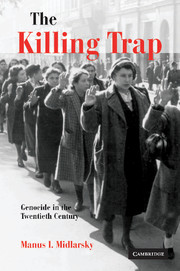Book contents
1 - Preliminary considerations
Published online by Cambridge University Press: 22 September 2009
Summary
On the morning of April 11, 1922, Hans Morgenthau presented a speech in honor of the duke of Coburg, leader of an autonomous duchy within Weimar Germany. This was an honor traditionally conferred on the top-ranked eligible student at the local gymnasium. No Jew had ever been selected for this honor; indeed, Morgenthau was the only Jew enrolled at this elite institution. Yet, there was no getting around the fact that Morgenthau merited this distinction and so the duchy allowed him to present the speech. That morning, citizens of Coburg distributed anti-Semitic leaflets including demeaning distortions of his Jewish-sounding name and urging a boycott of the speech. Later, Morgenthau wrote: “Nobody would speak to me … And people would spit at me and shout at me. People would shake their fists at me and shout imprecations or anti-Semitic insults, and so forth. It was absolutely terrible, absolutely terrible … probably the worst day of my life.” During the speech, the duke and other notables held their noses in a show of disgust. After his emigration, Morgenthau's classic Politics Among Nations would establish the study of international relations as a distinct field of inquiry in the United States.
Is this an illustration of virulent anti-Semitism that Daniel Goldhagen would argue quickly morphed into “eliminationist” anti-Semitism prior to and during the Holocaust? Or are there other answers that provide a more compelling explanation? Despite a long history of German anti-Semitism, the overtly anti-Semitic political parties experienced a steep decline prior to World War I. By 1912, together they captured less than 1 percent of the vote.
- Type
- Chapter
- Information
- The Killing TrapGenocide in the Twentieth Century, pp. 3 - 21Publisher: Cambridge University PressPrint publication year: 2005



